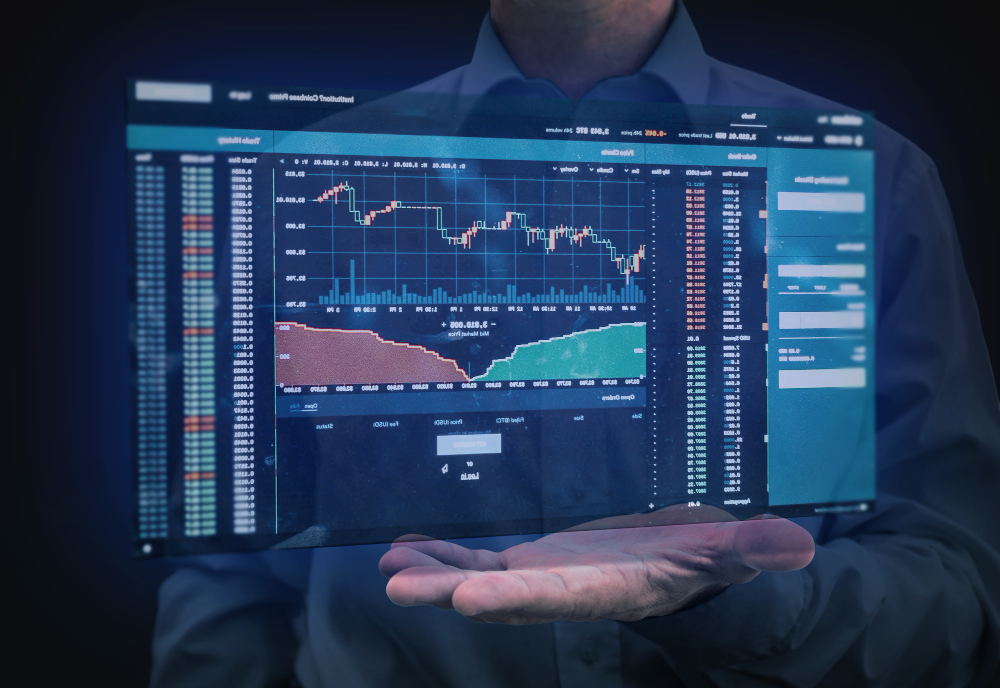The cryptocurrency market is a complex and dynamic environment. However, understanding the key indicators for crypto trading and analysis can help you make informed decisions when buying or selling digital assets. In this article, we will explore the top 10 indicators that can help you succeed in the crypto market.
For beginners in crypto trading or those struggling to make a profit, rest assured that with the right knowledge and tools, you can turn your investments into significant gains. Keep reading to discover the best indicators for crypto trading and analysis.

So, what are crypto indicators?
These are statistical tools that help traders analyze price trends. It also identifies potential opportunities and risks and makes informed decisions about buying and selling digital assets. These indicators use mathematical calculations based on historical price and volume data to generate insights into market trends.
Moving Averages
This indicator tracks the average price of a cryptocurrency over a specific period. It smooths out price fluctuations and makes it easier to identify market trends. Moving Averages are calculated by adding up the closing prices of a cryptocurrency over a certain number of periods and then dividing the total by the number of periods. The two types of Moving Averages are simple moving averages (SMA) and exponential moving averages (EMA). While SMA calculates the average price of a cryptocurrency over a specific number of periods, EMA gives more weight to recent prices, making it more responsive to current market conditions. These indicators can also help traders to identify support and resistance levels, providing valuable insights into the market.
Relative Strength Index (RSI)
It measures the strength of a cryptocurrency’s price movement by comparing its average gains and losses over a specific period. The RSI ranges from 0 to 100, with a reading above 70 showing an overbought market and a reading below 30 indicating an oversold market. An overbought market suggests that the price of the cryptocurrency has risen too quickly and is due for a correction.
Conversely, an oversold market suggests that the price of the cryptocurrency has fallen too quickly and is due for a rebound. RSI can also be used to identify the divergence between price and momentum. If the price of a cryptocurrency is rising, but the RSI is falling, it may be a sign of weakness in the market and a potential reversal. Conversely, if the price is falling, but the RSI is rising, it may be a sign of strength in the market and a potential reversal.
Bollinger Bands
Bollinger Bands are yet another tool to measure a cryptocurrency’s volatility by tracking its price movements and setting upper and lower bands around its moving average. When the price moves outside these bands, it signals a potential buying or selling opportunity. The upper and lower bands show the levels of support and resistance, respectively, and are frequently employed as significant indicators for potential price reversals. Traders and investors often use Bollinger Bands along with other technical indicators such as moving averages, RSI, and MACD, as this can enhance the accuracy of trading decisions and identify potential buy and sell signals.
Moving Average Convergence/Divergence
MACD is another powerful tool that tracks the difference between two moving averages and generates a signal line that shows when to buy or sell a cryptocurrency. It consists of two moving averages, one slower than the other, and a histogram that shows the difference between the two lines. When the MACD line crosses above the signal line, it indicates a bullish trend, and when it crosses below the line, it signals a bearish trend. It’s important to note that MACD should not be used in isolation but rather in combination with other indicators and analysis techniques. Traders should also consider the timeframe on which they are trading and adjust their strategy accordingly. MACD can be useful for short-term trading but may not be as effective for long-term trading.
Fibonacci Retracement
Fibonacci retracement, a technical analysis tool utilized by traders to pinpoint potential levels of support and resistance based on the renowned Fibonacci sequence, can help identify potential entry and exit points by retracing a predictable portion of its move before continuing in the original direction after an uptrend or downtrend. The Fibonacci retracement levels are determined by a mathematical pattern where each number is the sum of the two preceding numbers, such as 0, 1, 1, 2, 3, 5, 8, 13, 21, 34, etc. The commonly used Fibonacci retracement levels are 38.2%, 50%, and 61.8%.
On-Balance Volume
On-Balance Volume (OBV), a technical analysis tool designed to measure the volume of a cryptocurrency traded during an uptrend or downtrend, aids traders in determining whether a price trend is likely to continue or reverse by recognizing that changes in trading volume often precede changes in price. OBV calculates the total volume of a cryptocurrency traded during a specific period and adds or subtracts it from a running total based on whether the price closes higher or lower than the previous period. If the price closes higher than the previous period, the volume is added to the running total. Conversely, if the price closes lower than the previous period, the volume is subtracted from the running total.
Ichimoku Cloud
The Ichimoku Cloud is a complex technical analysis tool developed by Japanese analyst Goichi Hosoda in the 1930s. It enables traders to display support and resistance levels, momentum, and trend direction on a single chart. This indicator aids traders in making informed decisions about buying and selling cryptocurrencies. The Ichimoku Cloud consists of various components, such as the Kumo (cloud), Tenkan-sen (conversion line), Kijun-sen (baseline), Chikou span (lagging line), and Senkou span (leading span), that come together to form a sophisticated trading tool widely used in the cryptocurrency market today.
Average True Range
The Average True Range (ATR) is a technical analysis tool that tracks the average range of price movements over a specific period to measure the volatility of a cryptocurrency. This measurement can potentially help traders identify buying or selling opportunities based on market volatility. ATR takes into account the difference between the high and low prices of each period and any gaps between periods to provide a more precise measure of volatility compared to other technical analysis tools like standard deviation or Bollinger Bands.
Stochastic Oscillator
The Stochastic Oscillator measures a cryptocurrency’s momentum by comparing its closing price to its price range over a specific period. This tool can potentially help traders identify potential reversal points in the market. The Stochastic Oscillator uses two lines, %K and %D, to plot the results on a scale of 0 to 100. The %K line represents the current closing price relative to the price range over a specified period. Meanwhile, the %D line represents the three-period moving average of the %K line. When the Stochastic Oscillator is above 80, it may show that the cryptocurrency is overbought. This could lead to a price reversal, potentially showing a level of resistance. On the other hand, when the Stochastic Oscillator is below 20, it may show that the cryptocurrency is oversold and could experience a price reversal, potentially showing a level of support.
Volume
Volume is a crucial indicator of technical analysis, measuring the number of cryptocurrency units traded during a specific period. High volume usually shows a strong trend, while low volume shows weak or sideways movement. The volume provides valuable insights into market trends, potential price movements, and liquidity, making it an essential tool for traders to consider.
Conclusion
Crypto trading can be challenging, but with the right tools and knowledge, you can succeed. By using these top 10 crypto indicators, you can analyze market trends, identify potential opportunities and risks, and make informed decisions about buying and selling digital assets. Remember to keep learning, stay informed, and always use risk management strategies to protect your investments. Please note that no indicator can predict prices; they just track trends and trader behavior. And if you don’t know how these tools work, then don’t make any changes. Happy trading!
Personal Note From MEXC Team
Check out our MEXC trading page and find out what we have to offer! There are also a ton of interesting articles to get you up to speed with the crypto world. Lastly, join our MEXC Creators project and share your opinion about everything crypto! Happy trading!
Join MEXC and Start Trading Today!



